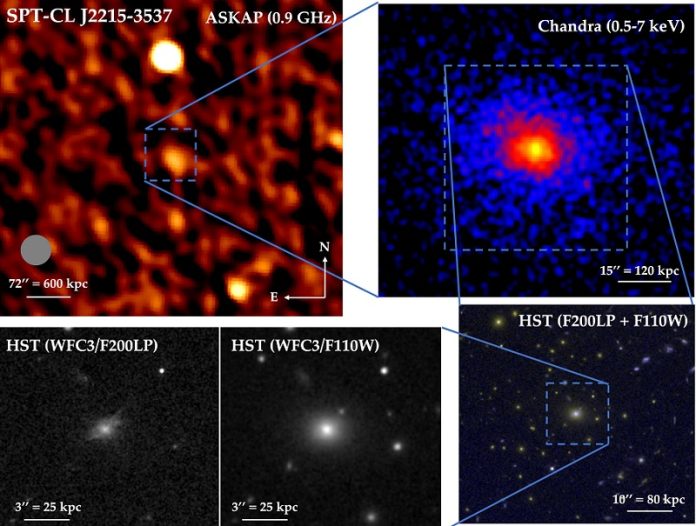
Scientists have stumbled upon the most remote ‘relaxed’ galaxy cluster to date—making it the furthest we’ve seen that isn’t being disrupted by hectic collisions with other galaxy clusters.
This discovery could help us understand more about the formation of these massive cosmic structures and why our universe looks the way it does today.
This fascinating galaxy cluster, named SPT-CL J2215-3537 (or SPT2215 for short), is a whopping 8.4 billion light-years away from Earth.
We are seeing it as it was when the universe was just 5.3 billion years old—about half its current age of 13.8 billion years.
It’s like looking through a cosmic time machine!
This suggests that SPT2215 began forming early on and has been chilling out, undisturbed, for the past billion years. The cluster’s mass is a mind-blowing 700 trillion times that of the sun.
So, what’s a galaxy cluster? These are large groups of dozens to hundreds of galaxies, along with a lot of hot gas and dark matter, all held together by gravity.
This hot gas, which is millions of degrees hot, glows in X-ray light and can help scientists track the changes in the cluster.
Galaxy clusters usually grow over time by merging with other clusters or groups, which can cause disturbances in the cluster’s gas.
But when they have enough time to ‘relax’ without merging with others, the gas can become smooth and calm, like in the case of SPT2215.
In the heart of SPT2215 lies a large galaxy with a massive black hole at its center.
Researchers found a high amount of new stars forming in this central galaxy, a process often fueled by the cooling of the hot gas in a relaxed cluster.
Interestingly, the black hole at the center doesn’t seem to be interfering with this cooling, which is different from what we usually observe in other relaxed clusters.
This discovery is a bit of a surprise because scientists didn’t expect to find a relaxed galaxy cluster this early in the universe’s history. Typically, these structures are still busy merging and growing. But SPT2215 is like a cosmic anomaly—massive, calm, and seemingly undisturbed.
This new insight dovetails nicely with other recent findings from NASA’s James Webb Space Telescope, which has been showcasing galaxies forming at an incredibly young age.
Observations of relaxed clusters like SPT2215 can help scientists learn more about the expansion of the universe and the mysterious dark energy that powers it.
The exciting findings were published in The Astrophysical Journal.
Follow us on Twitter for more articles about this topic.



